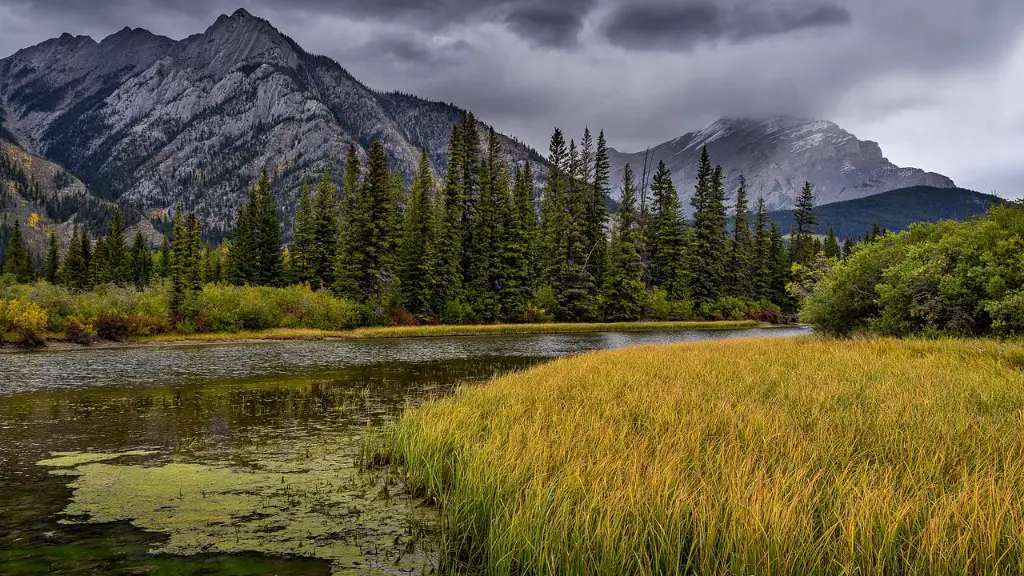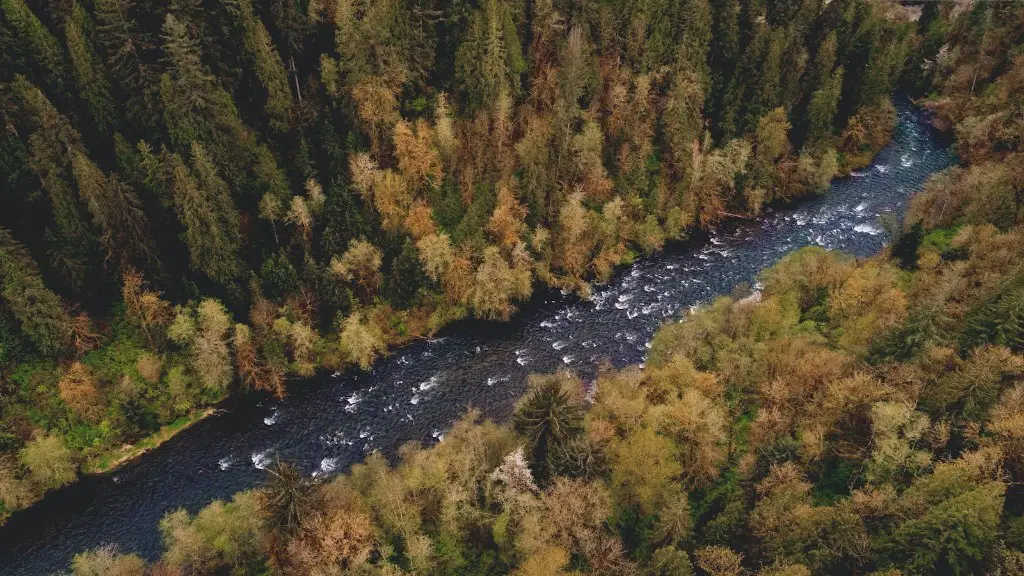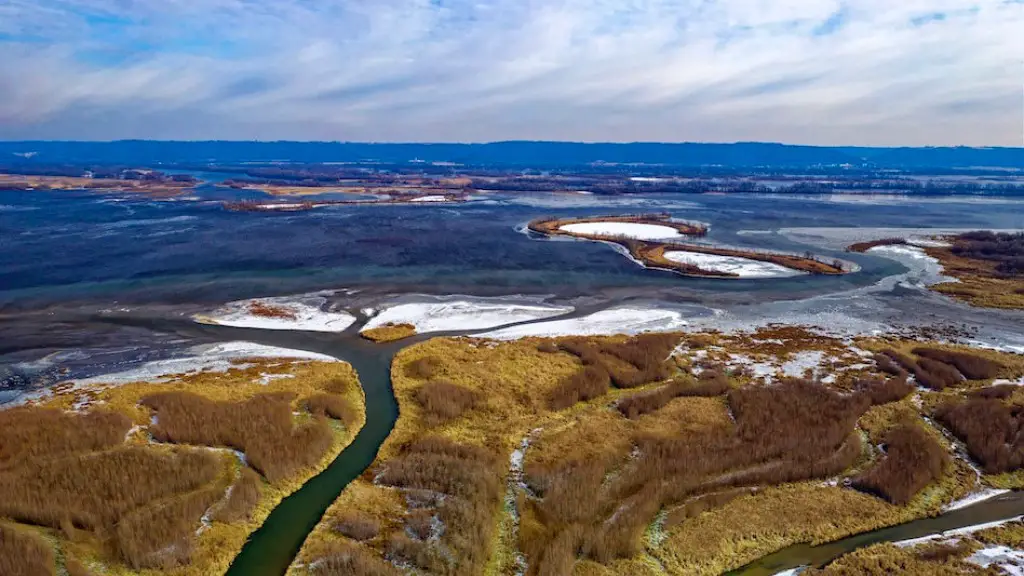The Yangtze River – the longest river in Asia and the third longest in the world – is a significant source of history, culture, commerce and recreation for millions of people in China and for millions of other people around the world.
The Yangtze is said to have been named for Yang Shao Hao, a figure in Chinese mythology who founded two of the original Four Great Ancient Chinese Kingdoms. It is also known as Chang Jiang, which is literally translated to “long river.” Its source is located in the mountains of Qinghai province in western China, while its mouth is located in the city of Shanghai, in the east. The Yangtze is 6,380 kilometers (3,964 miles) long, and it drains an area of 1.8 million square kilometers (695,000 square miles).
The area around the Yangtze River has been the center of Chinese civilization for centuries. The river has been used for transportation and irrigates vast areas of land that grow crops for staple food such as rice, wheat, and maize. In addition, the Yangtze provides potable water to many cities and towns, and it also supports industry by providing power through several hydro-electric dams. All of these activities create a vibrant and ever-changing landscape on its banks.
In recent years, the Yangtze River has come under increasing pressure from a variety of sources. Pollution from industrial, agricultural, and urban activities has degraded the river’s once pristine water quality. Over-fishing, deforestation, and urban development have also affected the river’s ecosystem. In addition, the building of a series of massive dams has resulted in changes that have harmed both wildlife and people living in the watershed.
Experts have recognized the seriousness of the threats to the Yangtze River, and there have been numerous efforts to address the issues. For example, China’s State Environmental Protection Agency (SEPA) has coordinated with local governments to introduce new policies for sustainable development, mitigation of pollution, and protection of habitats. In addition, the Ministry of Water Resources is leading the Yangtze River Water Pollution Prevention Programme, which seeks to reduce pollutants from reaching the river through the introduction of waste water treatment plans in major cities.
Regulatory efforts have been accompanied by a variety of corporate and private initiatives. For example, the Nature Conservancy has worked with local communities to develop sustainable fishing practices, while other organizations are supporting efforts to protect and restore species in the Yangtze River Basin. Likewise, businesses and philanthropic groups have pursued programs to increase environmental awareness and promote conservation.
The Yangtze River has shaped not just the physical and environmental aspects of the region, but also its culture and history. This is especially true given the Three Gorges Dam, the largest hydro-electric project ever built, which was a controversial, but ultimately successful attempt to generate power, control flooding and improve shipping conditions in the area. However, it has also caused significant displacement of people, and had a significant impact on the environment and wildlife in the region.
Environmental Impact of the Three Gorges Dam
The Three Gorges Dam has been at the center of a contentious debate since its inception, with proponents citing the potential benefits of hydro-electric power, flood control and improved navigation, while opponents have raised concerns about the environmental damage caused by the project. There is no doubt that the Three Gorges Dam is a massive project with significant impact on the ecology of the Yangtze River Basin.
The most noticeable effect is the loss of river habitat, due to the rising water levels created by the dam, which has submerged thousands of acres of land, including vital habitat for fish, birds and other wildlife. In addition, the changes to river flow patterns caused by the filling of the reservoir and the diversion of water for the dam’s generation of hydro-electric power have caused sediment to build up in some areas and erode in others.
The addition of large volumes of impounded water also has significantly changed the water quality of the river, and it has been found that the Three Gorges Dam has caused fishes’ migration route and reproductive cycle to be disrupted. These are just some of the issues that have been highlighted by ecologists in recent years and serve as a reminder that any large-scale development project can have profound environmental consequences.
The Wildlife of the Yangtze River
The Yangtze River is home to a rich array of wildlife, which have adapted to the many changes in the environment over the centuries. Fish such as carp, sturgeon and paddlefish have long lived in the river, while migratory birds make their home there each year. In addition, the Yangtze is home to many mammalian species, including the endangered Yangtze Finless Porpoise and the Chinese Giant Salamander, the world’s largest amphibian.
The Yangtze is also home to rare and endangered species such as the Chinese White Dolphin, also known as the Baiji. The Baiji, a freshwater species of dolphin, is threatened by habitat destruction and overfishing in the Yangtze, and it is believed that the population has dwindled to the point where it may soon become extinct. The Chinese Alligator and the Chinese Pangolin are also threatened species in the region.
Conservation efforts have been ongoing in order to preserve these species, but they have been hampered by a variety of factors, including illegal fishing, pollution from industry and agriculture, and development projects such as the Three Gorges Dam.
Economic Development and the Three Gorges Dam
The Three Gorges Dam has yielded substantial economic benefits for the region, such as providing hydro-electric power to millions of people and allowing ships to pass through the area without having to be hauled up the river. In addition, the construction of the dam has created thousands of jobs and injected billions of dollars into the local economy.
That said, the economic benefits have not been equally distributed, and there has been an increase in environmental issues related to the dam’s construction and operation. The region’s large-scale displacement of people, as well as degraded water quality and land used for the project, have come at a high cost.
Meanwhile, the benefits of the project on the local economy have been debated for years, as some experts argue that the dam has largely benefited large cities, such as Shanghai, while providing little benefit to the people in rural areas whom the project has displaced.
Recreational Opportunities on the Yangtze River
Although the Yangtze is primarily known for its commercial and industrial use and its cultural impact, the river has also become increasingly popular with travelers and nature lovers. There are numerous opportunities for boating and other water activities, such as fishing and river cruises. In addition, outdoor enthusiasts can seek out rare and endangered species in the river’s ecosystem.
The Yangtze is also a popular destination for tourists looking to see its natural beauty and explore the many cultural sites that have sprung up along its banks. In addition, the river is a major tourist attraction in its own right, with its iconic three gorges and a myriad of smaller villages and towns dotting the riverside.
For those who wish to better understand the history and culture of the area, there are also several museums, galleries, and historic sites of interest along the Yangtze River. For example, the Three Gorges Museum in Yichang is devoted to the history and culture of the river basin, as well as the Yangtze’s wildlife. Similarly, the Three Gorges Dam, located on the Yangtze just downstream of Yichang, is open for tours of its various features, such as its turbine halls and ship locks.
Long Term Outlook for the Yangtze River
Looking forward, the future of the Yangtze River remains uncertain. Although regulatory efforts and private initiatives have achieved some successes, the future of the river is still uncertain and further action is needed in order to ensure a sustainable future. In particular, measures must be taken to reduce the amount of pollutants entering the Yangtze and to protect wildlife habitats.
At the same time, efforts must be made to improve the economic situation of people affected by the Three Gorges Dam, and to ensure that the benefits of the project continue to accrue to all the people living in the Yangtze River Basin, and not just those in urban centers.
Overall, the Yangtze has long been a critical source of life in China, providing food, energy and transportation, and if we are to ensure its long-term sustainability, we must consider all its benefits and costs, and recognize that with great power comes great responsibility.
Conclusion
The Yangtze River is an important source of life, history, and culture for millions of people in China and around the world. Unfortunately, its waters have become threatened by various sources of pollution, development, and overuse, and it is up to us to ensure its sustainability and preservation for future generations.





